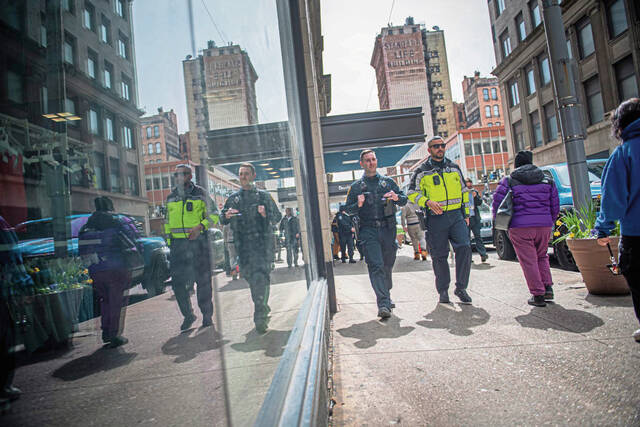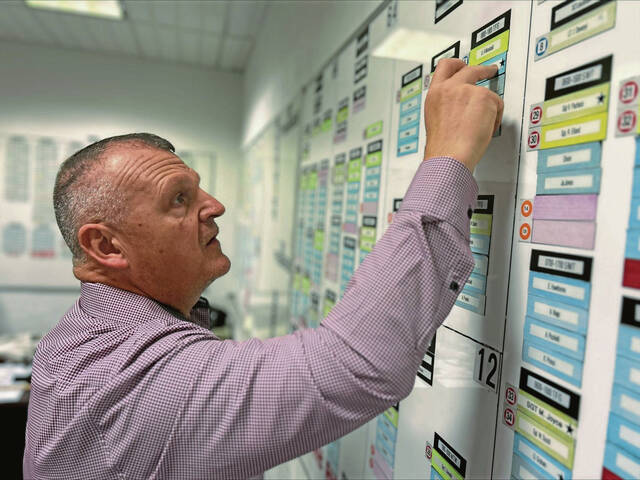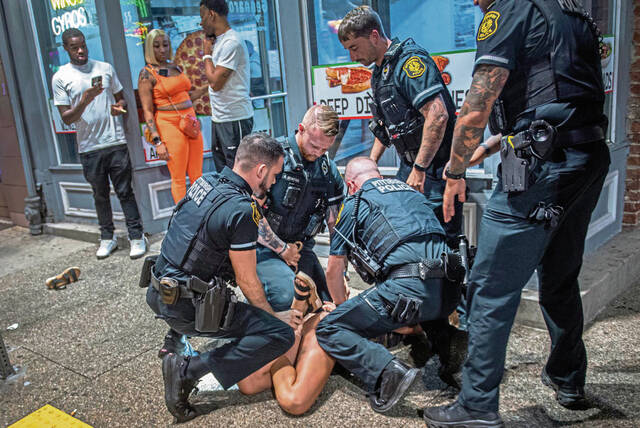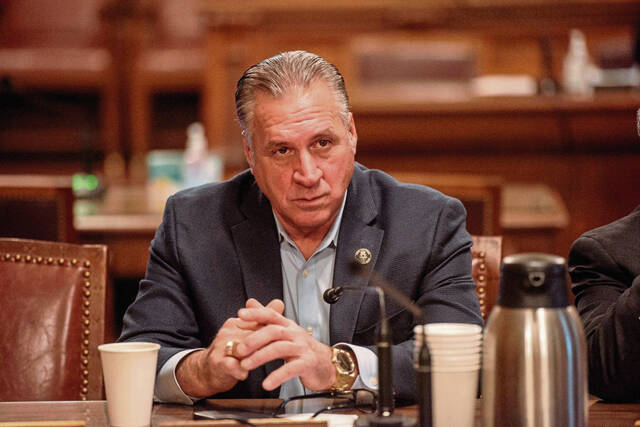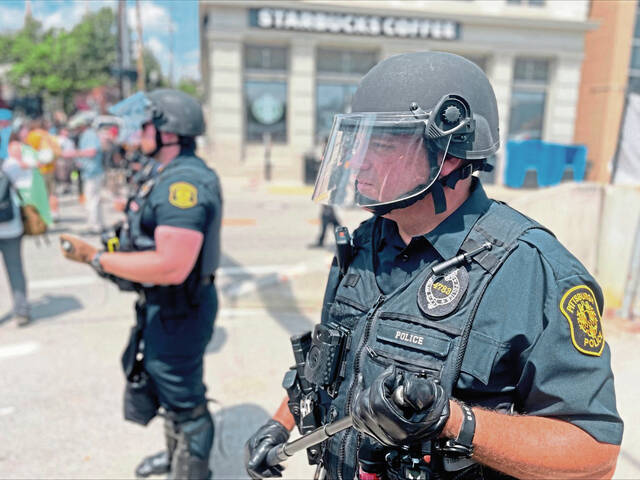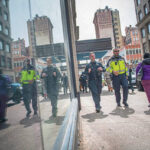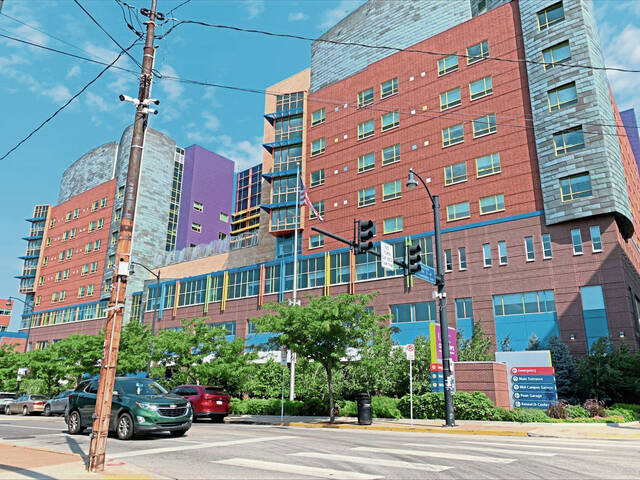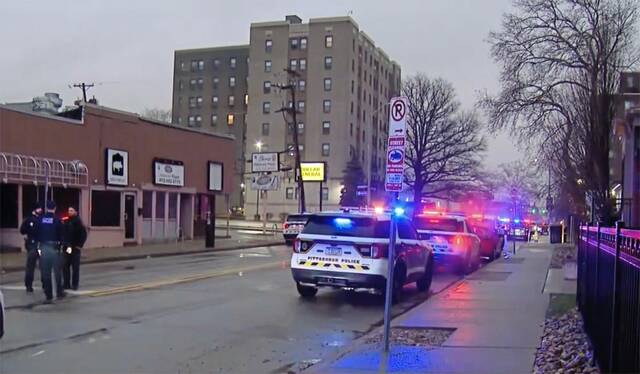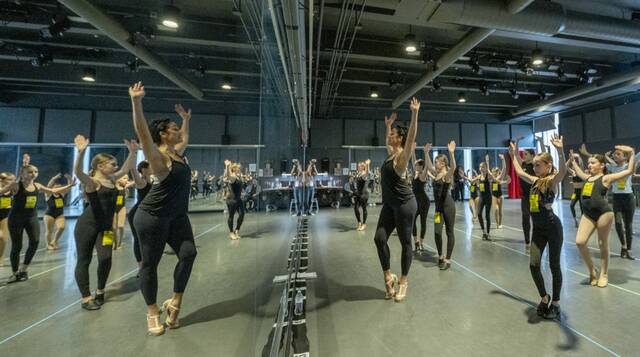Pittsburgh police ranks have plummeted to a 20-year low even as the city confronts weekend chaos on the South Side, persistent concerns about Downtown crime, and the need to keep crowds safe during the 2026 NFL Draft.
The police bureau employs 755 sworn officers — its fewest since 2005.
City Councilman Anthony Coghill, who chairs the public safety committee, summarized the current staffing levels with one word: “Frightening.”
“If we were a city worth our weight, we’d have more than enough police,” Coghill, a Beechview Democrat, told TribLive this week.
The staffing woes are compounded by a leadership vacuum in the police bureau. The force has an acting chief — its fifth top cop in the past three years, with two having left amid controversy.
There will no doubt be a sixth, appointed by whoever succeeds Mayor Ed Gainey in January. One of the two candidates to replace him in city hall is GOP nominee Tony Moreno, a former Pittsburgh police officer.
“Staffing is the biggest issue in the police department,” Moreno said Thursday, raising concerns about South Side and Downtown crime. “We’re all looking at this and saying, ‘How are we functioning this way?’ And you can see it in the streets.”
Gainey declined an interview request this week to discuss police staffing. In a prepared statement, the mayor said he’s heard “serious concerns around police staffing levels in Pittsburgh” but stressed things are moving in the right direction, citing a drop in homicides.
Some elected leaders and union officials disagree. They tell TribLive they’re frustrated by the steady decline of the force, which topped 1,000 cops just six years ago.
The current situation recalled for some the dire situation two decades past when a cash-strapped city shuttered a police station and laid off or demoted hundreds of officers so Pittsburgh could make payroll.
A total of just 269 officers now work patrol beats in the city’s six police zones, said Robert Swartzwelder, who heads the Fraternal Order of Police Fort Pitt Lodge No. 1, the union representing the city’s rank-and-file officers. That number stands at 296 officers when including special patrols, like the one policing unruly crowds on the South Side.
To Swartzwelder, it’s hardly enough.
“They always say I’m going, ‘The sky is falling!’ ” Swartzwelder said. “Well, the sky is falling!”
More than one-quarter of the city’s police officers have retired or resigned in the past two years, data show.
“We’re still way behind, we’re still losing as much as we’re gaining,” Coghill said. “The next administration, we need a blitz on recruitment, recruitment, recruitment. … And of course, we have to find money to support it. We obviously need more police.”
Allegheny County Controller Corey O’Connor, the Democratic candidate for Pittsburgh mayor, doesn’t think the city can offer flashy bonuses like some other major metropolitan forces to lure in new recruits. He wants to consider a plan to subsidize new officers’ mortgages or rent.
“It’s about building morale, it’s about hiring a police chief that’s going to be full-time and it’s also about expanding social-worker programs that help out officers, too,” O’Connor told TribLive. “Making those kinds of changes can lead to changes in the staffing levels.”
‘Finger’s in the dike’
Police ranks haven’t been this thin since a series of dramatic staffing reductions 22 years ago, according to police union figures.
The ax fell on Aug. 6, 2003, when then-Mayor Tom Murphy rolled out deep personnel cuts to help balance the city budget.
The city laid off 731 employees and eliminated 113 vacant posts — police officers, crossing guards and lifeguards accounted for 70% of the cuts. Pittsburgh closed 26 city swimming pools and all 19 of its recreation centers to slash payroll costs.
The bureau dropped from 1,117 officers in 2003 to 757 just two years later. Its ranks wouldn’t top 1,000 again for 16 years.
“All of this was during Act 47 — and we’re about to be below that,” Swartzwelder said, referring to the state designation for financially distressed communities. “Now, their finger’s in the dike and they’re hoping it doesn’t burst. They’re just hoping the levees don’t break.”
The latest staffing figures punctuate a dramatic drop fueled by Gainey-era budget cuts and lackluster recruitment. But problems were brewing before the current mayor took office.
Under Gainey, the city has not cut any officers but has reduced the number of unfilled police positions, reflecting the reality that the city could not reach the staffing levels budgeted for under prior administrations.
Interest in law-enforcement careers was already waning locally and nationally after the death of George Floyd, the Black man killed by a white police officer in Minneapolis that spurred widespread backlash against police mistreatment of African Americans.
Special patrols
A total of 103 officers left the Pittsburgh force in 2024. A year earlier, 102 officers resigned or retired.
So far this year, 22 officers have retired and 11 have resigned, police pension officials said Thursday.
The city can’t keep up. Police added 54 officers from academy classes since November. But the bureau’s total headcount dropped in the same period to today’s 755 from 762.
Coghill worries about the fact that Pittsburgh is losing cops faster than officials can hire them, especially as late-night crowds on the South Side’s East Carson Street require police to seek backup from the Pennsylvania State Police, the city’s SWAT team — even neighboring municipalities and officers in other zones.
“Crowds on South Side require pretty much all units,” Coghill said. “So, then we’re vulnerable over here in other parts of the city.”
A dozen officers are assigned to the South Side’s entertainment patrol, which polices the bars, clubs and restaurants on East Carson Street between 13th and 18th streets, the police union said.
Bureau officials have repeatedly declined to say how many officers have been added to the patrol each weekend — or how much forced overtime has been required — as crime has heated up in the entertainment district this summer.
A special Downtown patrol accounts for a staff of 28 — 17 of them patrol officers, the union said. Both the South Side and Downtown patrols have been assigned a high priority by the bureau.
Councilwoman Barb Warwick, D-Greenfield, said she is not concerned by Pittsburgh police seeking help from Allegheny County or outside municipalities in a pinch.
She wants Pittsburgh to focus more on civilian solutions, like social workers partnered with beat cops.
“We are really trying to move away, as a city, from the bureau of police being the only option for so many issues people may be facing,” Warwick said.
Magic number
With its staffing woes, the police bureau has sunk below the national average of officers per 1,000 residents. Pittsburgh has 2.52 officers for every 1,000 residents, based on a population of about 300,000. The 2024 U.S. average was 3.59, according to FBI data.
Gainey said he’s taken steps to restore the depleted force by jump-starting police academy classes, which he claimed his predecessor, Bill Peduto, shut down.
“That decision set us back — but we’ve taken steps to correct course,” Gainey said. “Restarting the police academy has been a critical move, but training new officers takes time. We’re committed to rebuilding this force the right way — not just quickly, but with quality and community trust in mind.”
Contrary to the mayor’s characterization, Peduto’s final city budget, which Gainey inherited, funded two academy classes and 950 police jobs in 2022.
While beefing up the ranks with cadets, Gainey has slashed the police payroll on paper. His budget this year funded 800 officers — 150 fewer than what Peduto called for in 2022.
Both Moreno and O’Connor say they would increase those levels as mayor.
“I think 850 would be a great number to have,” O’Connor said.
Gainey said he expects Pittsburgh to employ 825 officers by the end of next year.
Swartzwelder scoffed at that, saying, “You can’t even get to 800.”
Never enough
Despite Pittsburgh having fewer cops, its homicide rate has dropped 27% since 2018. Aggravated assaults and thefts have trended downward as well (although nonfatal shootings and sex assaults have risen). And the bureau said 911 response times remain far lower than the national average.
Pittsburgh’s police response to emergency calls averages between 7.4 and 7.6 minutes, 12 seconds longer than last year, said Cara Cruz, a police spokesperson. The U.S. average is about 10 minutes, the National Police Association says.
“What I’m seeing in terms of emergency response is adequate,” said Councilwoman Erika Strassburger, D-Squirrel Hill. “What we are sort of missing out on, I believe, is the proactive work that could serve to make our communities safer and build trust with the police.”
One way the bureau has tried to compensate for limited manpower is to change its scheduling. Larry Scirotto, Pittsburgh’s police chief from May 2023 to last November, shifted officers from working five eight-hour days each week to four 10-hour days.
Former Pittsburgh police Chief Robert McNeilly, who ran the bureau for a decade under the Murphy administration, said such a move made sense. McNeilly led the force during the layoffs and was the target of anger from the rank and file.
“We had to go back to the drawing board and see that we had enough officers on the street,” McNeilly said.
Pittsburgh police Acting Chief Martin Devine also has taken measures to do more with less. He started temporarily rotating about 20 detectives into patrol duty in multiple zones this summer.
Devine did not return calls or emails this week seeking comment.
“I can tell you,” McNeilly said, “no matter how many police officers you put out there, people will say it’s not enough.”
Councilwoman Theresa Kail-Smith stressed Thursday that police staffing in Pittsburgh must increase.
The West End Democrat voted against Gainey’s 2025 budget, which shrank the police bureau. She warned of more of the same in 2026.
“I won’t vote for this budget if it doesn’t include an increase in police,” Kail-Smith told TribLive. “If that means we have to freeze grant programs or something like that, well, that’s what it’s gotta be.”
Kail-Smith wants more officers making proactive arrests — not working in specialized units like the mounted police.
Incentive plan
Gainey and others stress that staffing headaches are a national phenomenon driven by the aftereffects of the pandemic, a changing job market and what the mayor calls “the national reckoning with policing.”
In Phoenix, officials have struggled to fill 500 vacant police positions — nearly one-fifth of the city police force of 2,500 officers, the city has reported.
Last year, though, the Arizona capital city offered sworn officers a $7,500 “hiring incentive” to join its force; by the end of 2024, it processed 2,274 applications for those posts.
Seattle police also struggled with staffing as the pandemic waned in a city with more than twice the population of Pittsburgh.
They aimed to grow their 948-officer force by 500 cops in five years, and offered bonuses up to $50,000 to police coming from other departments. This year, they’ve hired six times the number of police officers they hired in the first half of 2024.
Police administrators in Pittsburgh point to signs of improvement. In early July, more than 160 recruits were undergoing physical fitness testing. The number two years ago was 40.
But even with a fresh flock of rookies, the NFL Draft, an event expected to bring up to 1 million football fans to Pittsburgh, could test the capacity of the diminished force.
“If (the bureau) doesn’t increase its numbers by 300 or 400 officers by the draft,” warned Swartzwelder, “they’re not going to be able to police it.”


